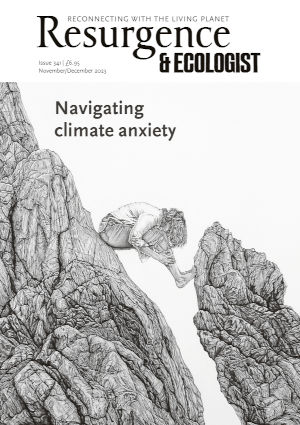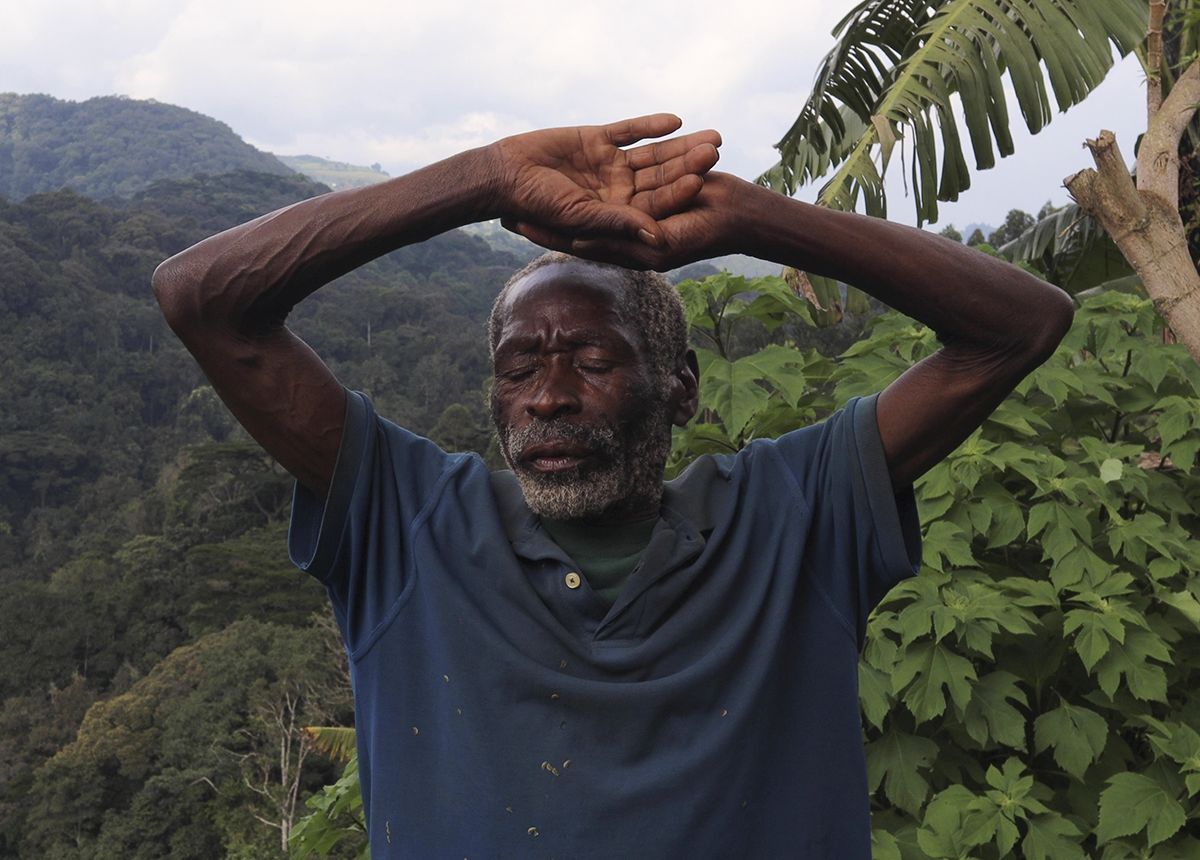Environmental philosopher Glenn Albrecht created the term ‘solastalgia’ in 2005, based on the emotional impacts of large-scale coal mining on individuals’ wellbeing in New South Wales, Australia, where he is based.[2] In 2015, the term was included in the medical journal The Lancet as a contributing concept to the impact of climate change on human health and wellbeing.[3] More recently, it was also published in the United Nations 2022 report by the Intergovernmental Panel on Climate Change (IPCC). In Albrecht's publication Earth Emotions (2019), solastalgia is identified as one of six conditions he defines as land-based sicknesses, or psychoterratic diseases, emerging from our changing relationship to our natural world.[4] Unlike the more commonly recognised term ‘eco-anxiety’, which relates to the sense of global dread and lack of control over the current and predicted future state of human-induced climate change, solastalgia is rooted in a lived experience of place, and bound within how someone defines their home, land and identity.[5]
The dominant global discourse on the climate crisis, for instance, is data driven, primarily focused on carbon reduction and prevention of a two-degree rise.[6] Quantitative representations of declining ecosystems are more widely represented than human affliction and there is a lack of critical understanding of how ecosystem traumas are deeply entangled with human experiences. Social change specialist Jem Bendell, in his 2018 book Deep Adaption, makes the case that the climate crisis is the result of how far our human psyche has, in western society, become divorced from our natural habitat.[7] Bendell reiterates that our inability to see ourselves as part of Nature has damaged both our environment and our spirit, arguing that a large part of what we are dealing with is this disconnect, a sentiment echoed in The Uninhabitable Earth.[8]
Writer Paul Kingsnorth blames this on what he calls “the myth of progress” that we have (for a long time now) told ourselves a dangerous and fictional story of economic progress in which everything must continue to grow, expand and increase.[9] Yet we are seeing the rise of climate catastrophes beginning to unravel this story, exposing instead a crisis of narratives. In Kingsnorth’s view, this crisis stems from having constantly positioned ourselves at the centre point of the narratives of the planet.
In a move to counter the disconnect in how we are responding to the climate crisis, in 2019, British newspaper The Guardian announced a more human-centred approach to visual journalism, responding to research undertaken by Climate Visuals showing that images of melting ice and suffering animals were felt as “remote and abstract”, whilst those featuring human experiences elicited more urgency, relevance and emotion.[10] Instead of exchanging one approach for another, the image of the polar bear for that of the human, we propose the need for a parallel response – a process of deep listening to both the human stories of solastalgia as well as the texture, ecosystems and identities of those landscapes.
Landscapes are not neutral backdrops where human activities unfold.[11] Rather they are relational, dynamic and nested social-ecological systems. “Grounding solastalgia research in landscapes allows for an emphasis on the richly intertwined aspects of nature and culture.”[12]
Through exploring the human lived experiences of solastalgia whilst also reclaiming the human body as an extension of Nature, we might, through this duality, “simultaneously heal human and ecosystem health while inspiring collective action against the structural forces underpinning climatic and environmental change”.[13]
References
1. Lindsay P. Galway et al., ‘Mapping the Solastalgia Literature: A Scoping Review Study’, International Journal of Environmental Research and Public Health (25 July 2019), 2.
2. Glenn Albrecht, Solastalgia: A New Concept in Human Health and Identity (PAN Partners, 2005).
3. Nick Watts et al., ‘Health and Climate Change: Policy Responses to Protect Public Health’, The Lancet, 386 (10006) (2015): 1861–1914.
4. Glenn Albrecht, Earth Emotions: New Words for a New World (Cornell University Press, 2019), 76.
5. Oxford Languages, Oxford University Press, 2020, languages.oup.com/word-of-theyear/2019/; Susan Clayton et al., ‘Mental Health and Our Changing Climate: Impacts, Implications, and Guidance’ (American Psychological Association and ecoAmerica, 2017), www.apa.org/news/press/releases/2017/03/mental-health-climate.pdf
6. UNFCCC, ‘The Paris Agreement’, unfccc.int/process-and-meetings/the-paris-agreement/the-paris-agreement
7. Jem Bendell, Deep Adaptation: A Map for Navigating Climate Tragedy (Institute for Leadership and Sustainability, 2018), 19.
8. Jem Bendell, Deep Adaptation: A Map for Navigating Climate Tragedy (Institute for Leadership and Sustainability, 2018), 19. David Wallace-Wells, ‘The Uninhabitable Earth: Life After Warming’ (Allen Lane, 2019).
9. Paul Kingsnorth and Emmanuel Vaughan-Lee, ‘The Myth of Progress: Interview with Paul Kingsnorth’, Emergence Magazine, emergencemagazine.org/story/the-myth-of-progress/
10. Fiona Shields, ‘Why We're Rethinking the Images We Use for Our Climate Journalism’, The Guardian, Guardian News and Media, 18 October 2019, www.theguardian.com/environment/2019/oct/18/guardian-climate-pledge-2019-images-pictures-guidelines
11. John Wylie, Landscape (Routledge, 2007).
12. Lindsay P. Galway et al., ‘Mapping the Solastalgia Literature: A Scoping Review Study’, International Journal of Environmental Research and Public Health (25 July 2019), 10.
13. Lindsay P. Galway et al., ‘Mapping the Solastalgia Literature: A Scoping Review Study’, International Journal of Environmental Research and Public Health (25 July 2019), 15.







